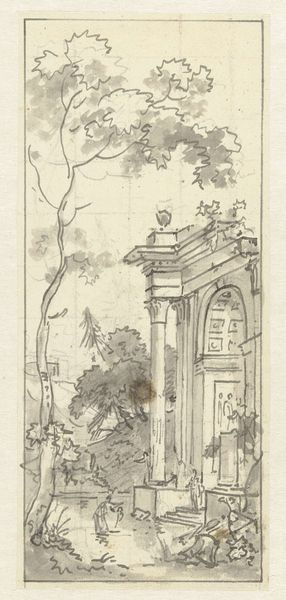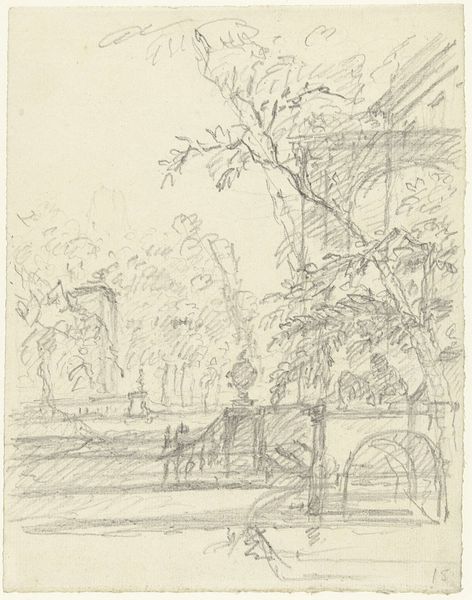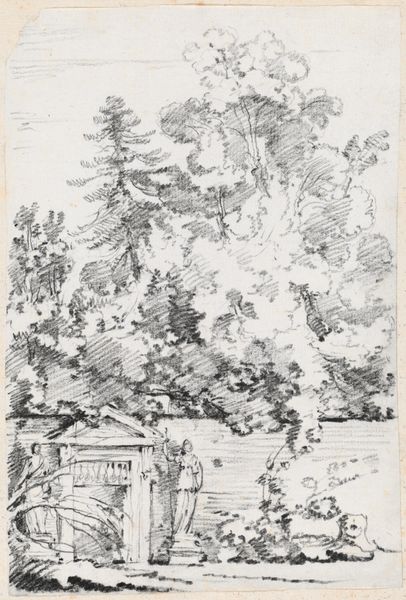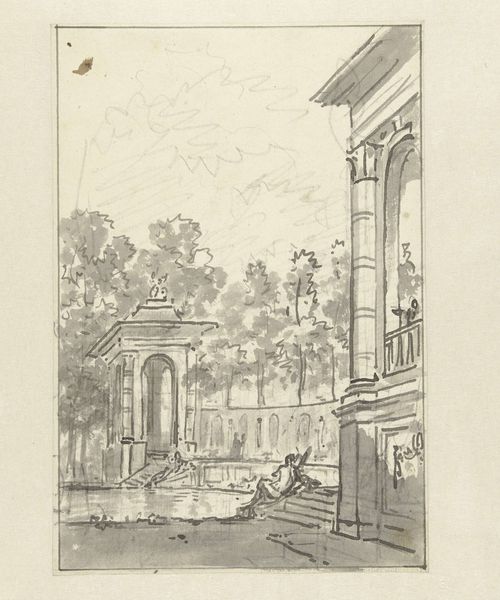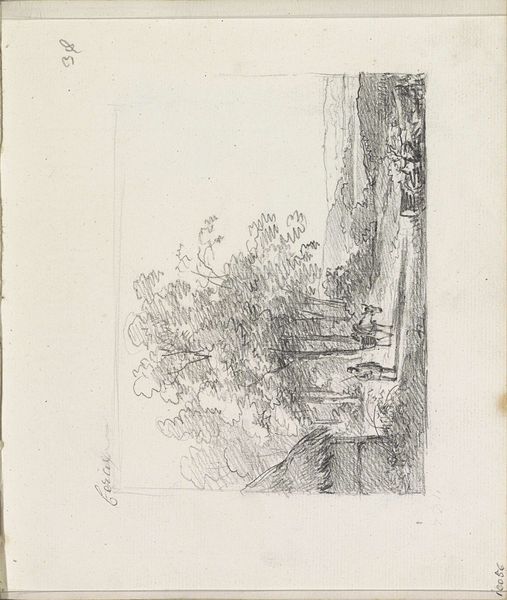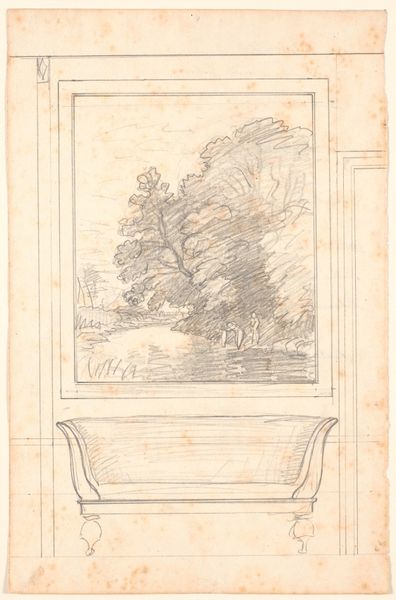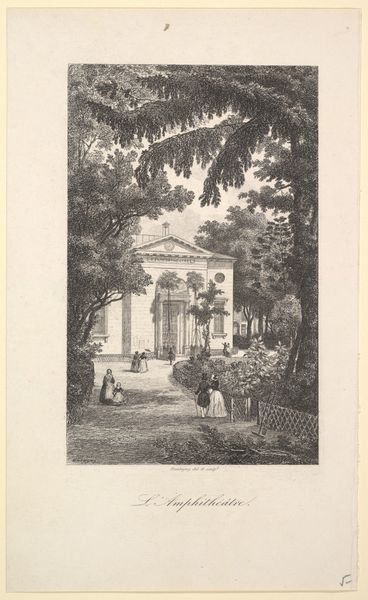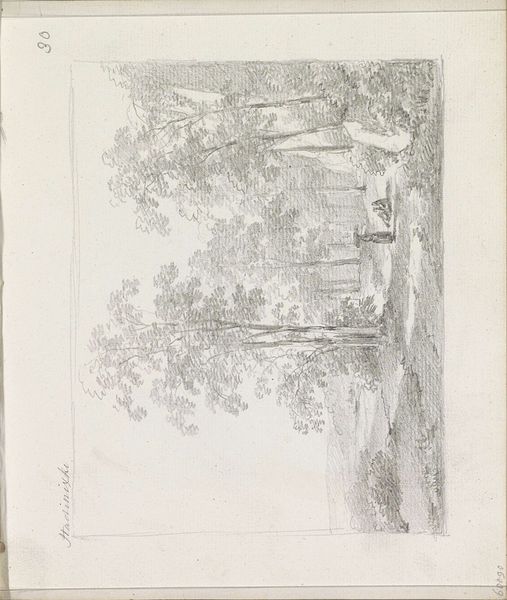
drawing, ink, pen
#
drawing
#
comic strip sketch
#
neoclacissism
#
pen illustration
#
pen sketch
#
landscape
#
personal sketchbook
#
ink
#
sketchwork
#
pen-ink sketch
#
pen work
#
sketchbook drawing
#
pen
#
storyboard and sketchbook work
#
sketchbook art
Dimensions: height 269 mm, width 182 mm
Copyright: Rijks Museum: Open Domain
Curator: This pen and ink drawing, dating from between 1752 and 1819, is entitled "Ontwerp voor behangselschildering," which translates to "Design for a Wallpaper Painting." The piece is attributed to Jurriaan Andriessen and resides here at the Rijksmuseum. Editor: My first thought is how airy and theatrical this work feels. The wispy lines and washes create this kind of stage set, where people are posing. It’s intriguing. Curator: Andriessen specialized in precisely that: wallpaper paintings for wealthy Dutch patrons. What strikes me is how the piece captures the Neoclassical aesthetic gaining traction then, emphasizing symmetry and classical architecture. It shows a clear return to the values of classical antiquity. Editor: But it's also playing with ideas of leisure and class, right? Look at the figures strolling in the foreground, the almost performative nature of their postures, the figure carrying a parasol, that screams leisure, who are the paintings trying to attract? Curator: Exactly, these garden scenes, very much in line with those emerging sociopolitical values, are explicitly for the upper class, promoting idealized lifestyles as inherently attainable or achievable by those same social class who can afford the decor of the paintings to the spaces within their mansions or country estates. Editor: It’s fascinating how this seemingly innocuous scene carries that baggage of class aspiration and idealized life. The architectural elements are not only an exercise in style, they also set the scene of the possibilities of power, for the observer and also for the actors within the composition. I am left asking who exactly are the implied beneficiaries of the social power dynamic at play? Curator: This work also stands as a tangible manifestation of art patronage and the social structures shaping art creation at the time. Andriessen served the elite, visually legitimizing their status and projecting their perceived importance to all. Editor: The loose linework also gives a sense of temporality. We understand the power relationship as one with potential fragility, of power subject to the flows and moods of society in time. The wispy strokes of the foliage become as important as the permanent and more concrete strokes of the Neoclassical building at the back of the composition. Curator: Precisely! This piece underscores the significance of art's historical backdrop and is crucial to its full and most complete understanding, if we are interested in analyzing the society responsible for its creation. Editor: Thinking about the relationships between power, fragility, status and aesthetics has certainly expanded my viewing experience today, bringing attention to previously unseen parts of myself.
Comments
No comments
Be the first to comment and join the conversation on the ultimate creative platform.

